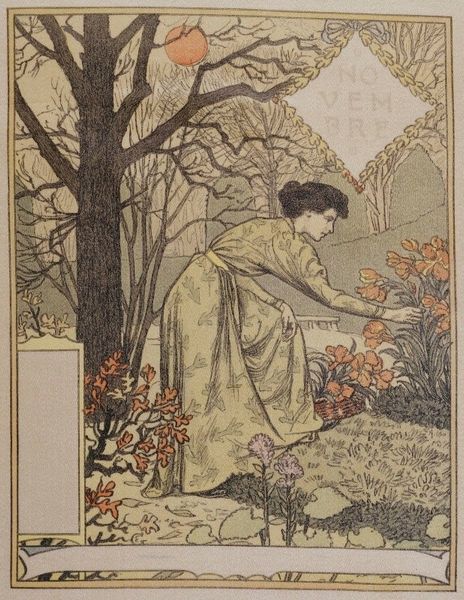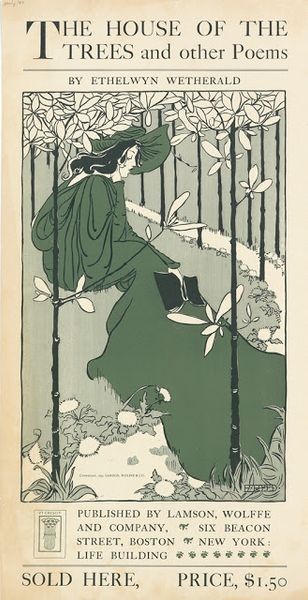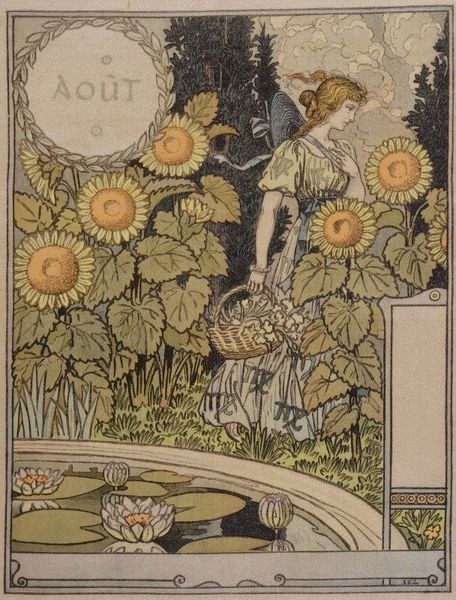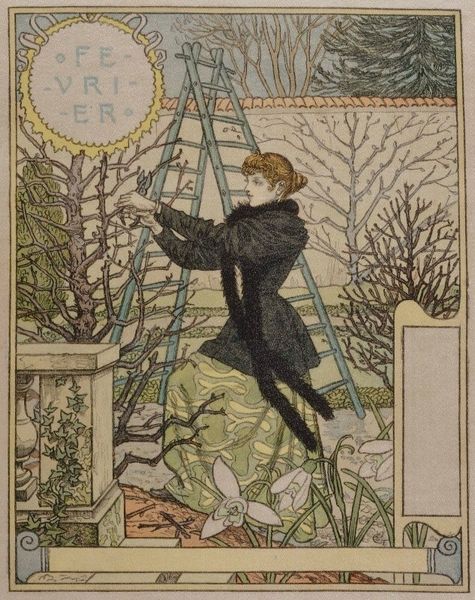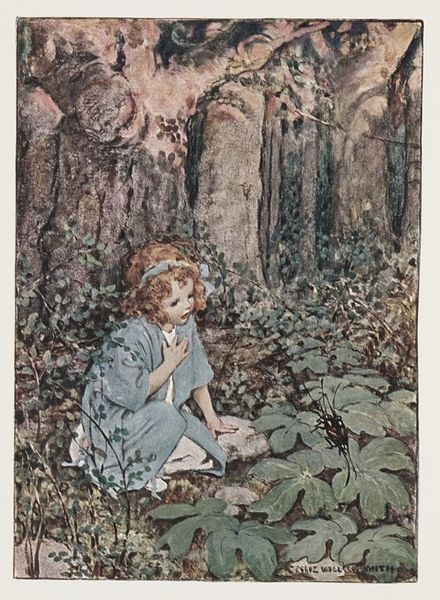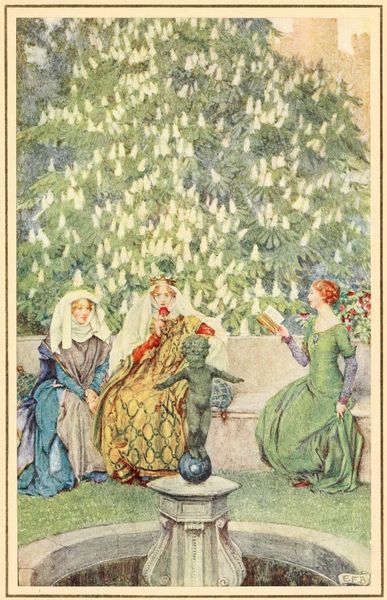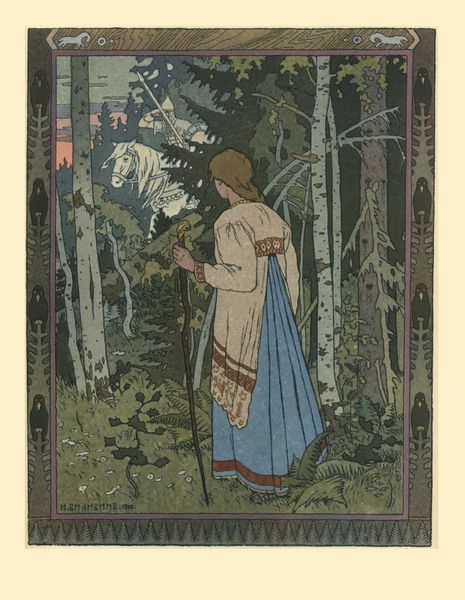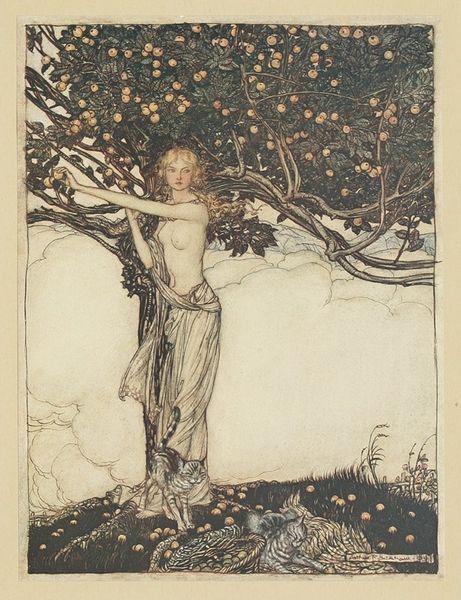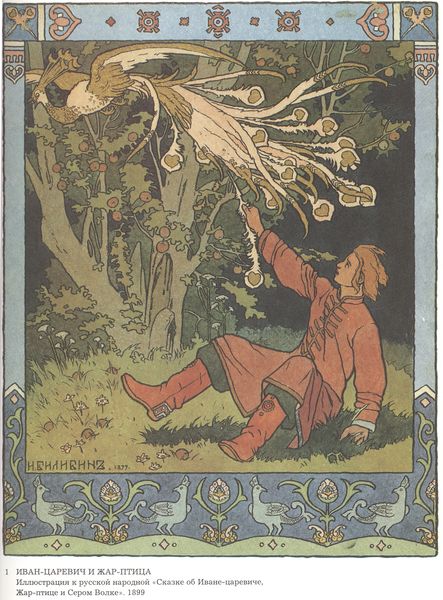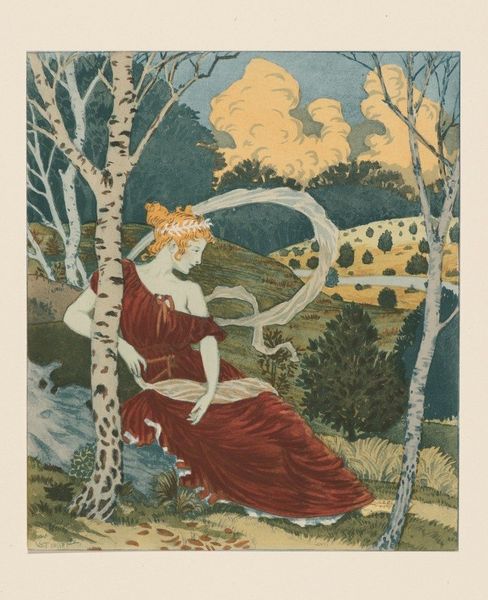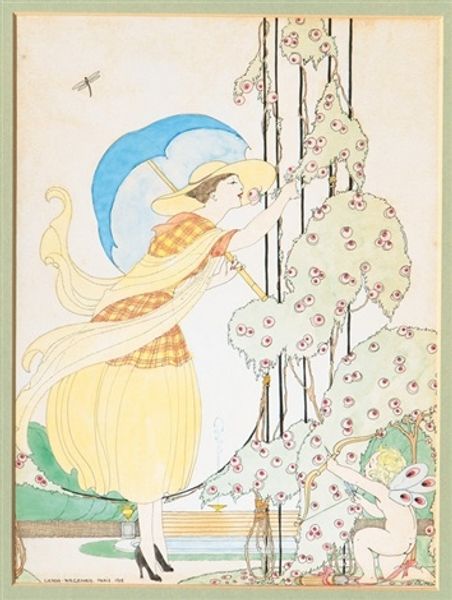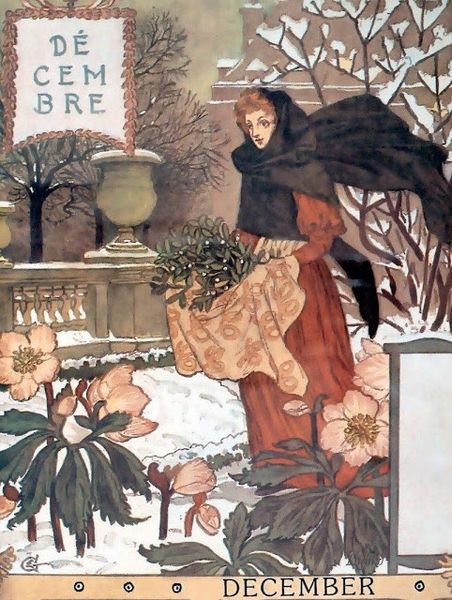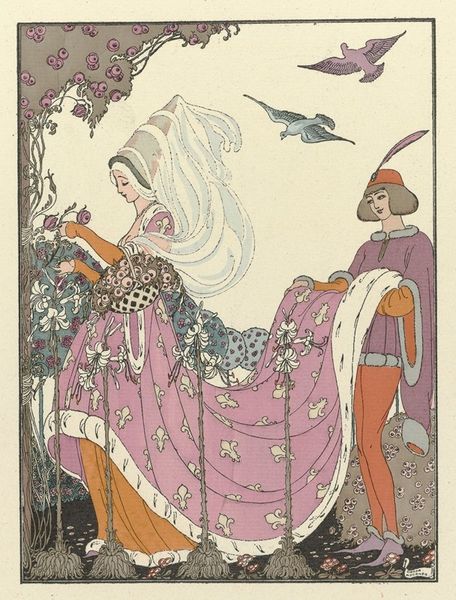
Copyright: Public Domain: Artvee
Editor: So, here we have Eugène Grasset’s "Décembre," made between 1896 and 1898. It seems to be coloured pencil and perhaps some watercolor? The mood feels melancholic, despite the beautiful winter garden. I'm really curious – how do you interpret this work? Curator: It's interesting you pick up on that melancholy. Grasset uses a lot of visual symbolism here. Notice how December, embodied as a woman, is bringing forth life - sprigs of green - even as the landscape is dormant and cold. The hellebores flowering so early also have a specific association. Editor: Oh, I didn't realize that those were hellebores! What is their significance in this context? Curator: Often, in art, hellebores flowering in the snow can be linked to hope and even defiance against barrenness. It's a Christian association in this context with light amidst the dark. Editor: So she's almost an allegorical figure, challenging the gloom of winter? Curator: Precisely. And note how the frame around her is almost like a window—suggesting this act isn't isolated but is set within the constraints of the social calendar but still showing the promise of a renewed world that exists within it. Also what do you think about the decision to represent December as female figure? Editor: I never thought of it that way! It feels hopeful that something beautiful exists within such a dull period, It represents December's strength and fertility; there’s definitely an echo of pre-Christian winter goddesses and fertility rituals. Thanks so much for clarifying some of those important interpretations for me, you taught me some really exciting links within the artwork! Curator: It’s fascinating how these visual traditions and memories continue to shape how we see and give meaning to these depictions of our calendar.
Comments
No comments
Be the first to comment and join the conversation on the ultimate creative platform.
